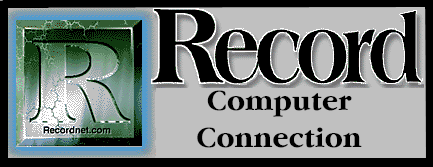

While the Internet and World Wide Web are grabbing all the glitzy headlines, a less glamorous component of this online phenomenon is revolutionizing everyday communications. Electronic mail is rapidly becoming an integral part of home and office computing. Businesses everywhere are now dependent on this messaging system that allows letters, documents and files to be instantaneously transmitted electronically throughout the world.
E-mail is almost as immediate as a telephone conversation, but with far superior documentation. Messages can be hard-copied to a printer or forwarded to all interested parties. Companies can attach actual working files to their e-mail messages for transmission to co-workers in the next building or across the globe. This enables round-the-clock productivity for companies with subsidiaries in different time zones. Many busy executives read and respond to e-mail during off-hours when they can escape the distractions of the actual workday.
Most importantly, e-mail is cheaper than long distance telephone charges as connections are usually local. Messages can be composed offline and sent upon completion, requiring only minutes of actual online connect time.
Electronic mail requires software referred to as a "mail client". The major online services, such as America Online and CompuServe, have a mail client bundled with their package. If you are connecting to cyberspace via an Internet services provider (ISP), your software package should include a web browser and a mail client, such as Eudora, QMC, or Microsoft Exchange. The latest version of Netscape 2.0 now includes a proprietary mail client as part of their browser software. Earlier versions required a secondary mail client for e-mail transmissions.
I'm often asked, "Can I receive e-mail when my computer is off?" The answer is yes. E-mail is not sent to you directly, but rather to a computer, designated as your mail server. This could be a local ISP server or an America Online computer located in Vienna, Va., for example. Your mail sits on the server until you log onto your online account to check for new mail. At this point, your mail is delivered and you can save, delete, forward or reply to your electronic posts.
Just as there are accepted standards for letters sent via snail mail, electronic mail has its own conventions referred to as netiquette. Typing in all capital letters is considered shouting and generally looked upon as rude, unless someone is truly angry. To add emphasis to text, surround a word or phrase with an asterix or less-than and greater-than signs, ie: *Don't shout* or >Turn your Caps Lock off<
Unsolicited messages sent as generic bulk e-mail is frowned upon and akin to spamming, the practice of flooding newsgroups with irrelevant or inappropriate messages. A reply to such solicitations with the words UNSUBSCRIBE in the subject and message areas usually halts further posts. If you are sending an e-mail marketing piece, target your audience as you would in normal business practices to avoid being flamed by an unhappy recipient. Flamings are intentional insults or provocations.
For more casual correspondence, the use of emoticons is common to express your feelings. Happy and sad faces are comprised of a colon, dash and parentheses, :-) :-( For a wink, use a semi-colon instead of a colon, ;-) For a "wry" face, use a back-slash instead of a parentheses :-\ The use of acronyms is also commonplace in casual e-mail correspondence, such as: IMHO (In my humble opinion); BTW (By the way); or RTM (Read the manual).
Remember that electronic mail is never entirely private. Encryption technology provides a good degree of security for your posts, but a determined hacker probably can break into your e-mailbox. More commonly, your message could be viewed by someone passing a terminal or circulating a hard copy around the office. "No one really cares", is the prevailing attitude on the Net, but it's a good idea not to post e-mail that you wouldn't want published on the front page of newspaper.
E-mail is an efficient and affordable means of communication. Make sure
your business card includes your e-mail address and mind your netiquette!
Feedback? E-Mail
Return to Article Index | Return to CeePrompt's Home Page
©1996 The Stockton Record, Page Design and Layout by RRS and CeePrompt!